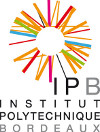 |
 |
|
Intitulé:
Fuzzy Multilevel Graph Embedding for Recognition, Indexing and Retrieval of Graphic Document Images
du groupe BioInformatique et Visualisation
|
| Date | 2015-04-16 11:00-12:00 |
| Titre | Fuzzy Multilevel Graph Embedding for Recognition, Indexing and Retrieval of Graphic Document Images |
| Résumé | As warm-up, I will show two videos of approx. 2 min each. First one on the document scanners and second one on the SmartDoc competition that we are organizing for ICDAR2015.
For the scientific part, in first part of the talk I will focus on presenting a new method of explicit graph embedding. The proposed graph embedding method exploits multilevel analysis of graph for extracting graph level information, structural level information and elementary level information
from graphs. It embeds this information into a numeric feature vector. The method employs fuzzy overlapping trapezoidal intervals for addressing the noise sensitivity of graph representations and for minimizing the information loss while mapping from continuous graph space to discrete vector space. The method has unsupervised learning abilities and is capable of automatically adapting its parameters to underlying graph dataset.
In the second part I will focus on presenting a framework for automatic indexing of graph repositories for graph retrieval and subgraph spotting. This framework exploits explicit graph embedding together with classification and clustering tools. It achieves the automatic indexing of a graph repository during its off-line learning phase, where its extracts the cliques of order 2 from graphs and embeds them into feature vectors by employing the aforementioned explicit graph embedding technique. It clusters the feature vectors into classes, learns a classifier and builds an index for the graph repository. During on-line spotting phase, it extracts the cliques of order 2 from query graph, embeds them into feature vectors and uses the index of the graph repository to retrieve the graphs from repository. The framework does not require a labeled learning set and can be easily deployed to a range of application domains, offering ease of query by example (QBE) and granularity of focused retrieval. |
| Lieu | 178 |
| Orateur | Muzzamil Luqman |
Aucun document lié à cet événement. RetourRetour à l'index
| |


